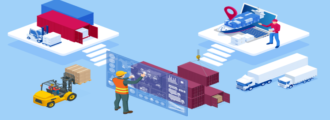If you’ve been frustrated with Lawson, or you’re simply ready to change ERPs, you have a number of other options available to you. Obviously, the best solution for you will depend on your company’s financial management, payroll, and HCM needs, but if you’re considering migrating from Lawson to Workday, here are a few things you should know.
Benefits of Workday
First off, it’s important to realize that while 21% of Lawson customers we surveyed are interested in switching to Workday, they aren’t the only types of customers that consider making that change—according to a Morgan Stanley poll, 10% of Oracle users also said they plan to switch to Workday for managing employees. Clearly, people from a wide variety of ERPs are interested in what Workday brings to the table. So what benefits could Workday offer Lawson customers in particular, beyond its 97% customer satisfaction rating, of course?
The Power of the Cloud
When you consider the fact that 80% of all IT budgets are expected to be committed to cloud apps and solutions by the end of 2018, it’s clear that cloud is the way of the future. Here are some specific benefits offered by Workday’s cloud-based nature.
Cloud-based from the Beginning
Workday has always been a cloud-based solution, which gives it a leg up on ERPs only now trying to make the switch. It just makes sense that trying to convert a solution to work in the cloud is going to be more difficult than one built from the ground up to work that way.
Lower Cost of Ownership
Thanks to its cloud-based nature, Workday offers a lower cost of ownership, since there’s no need for on-prem hardware or infrastructure.
Stay Up-to-date
New tech releases for Workday come out twice a year, and each migration to the new version should only take about six weeks (which makes it easy to up-to-date on all the latest technology).
Technical Advances
Beyond the advantages Workday offers as a part of its cloud-based nature, it also sports a number of attractive technical advantages. Thanks to its in-memory structure, Workday users won’t need a separate reporting system as they can drill down on data right where it lives. Workday also defines its architectural structure as metadata, which means logic can be changed without requiring coding or code recompilation, as well as reducing the number of tables needed to support the data. This structure makes Workday more nimble than ERPs built on complex relational databases.
Embraces the Best of Breed Philosophy
Workday knows what it does well—financial management, HCM, and payroll. For the areas where Workday doesn’t specialize, it partners with the companies that do. Take CRM, for example. Workday doesn’t have a native CRM application, so they’ve partnered with fellow cloud computing Salesforce to cover that need, offering native applications to Salesforce from Workday. In addition, Workday recently purchased Adaptive Insights, a cloud-based analytics, planning, and collaboration company to shore up its offerings in those sectors, making the solution even more attractive.
Globally Minded
Along these same lines, Workday’s relationship with its partners allows it to more easily serve businesses with international needs. Take payroll solutions, for example. If your company has payroll needs outside the US or Canada, Workday’s Global Payroll Cloud program uses prebuilt integrations from Workday Partners to make integrations with third-party payroll providers easy, no matter where they are in the world. (It covers more than 100 countries!)
Specific Lawson-to-Workday Migration Tips
When migrating from Lawson to Workday, you will need someone with strong business analyst skills to work with your implementation partner for Workday. This person will need to be able to help with the transaction of data, i.e. what specifically is Workday asking for (since the two systems use different terminology at times) and where does that data reside in Lawson?
Whoever you have working for you on the Lawson side of things will need to know how things are stored and calculated in Lawson. For example, a common issue we see clients run into is when they find information within Lawson and think, “Perfect! This is what we need to send over to Workday”…but what they’re looking at may be the result of a custom program going to specific points in time, doing calculations and producing the figures they’re seeing. In these cases, you can’t just query the database or create a Microsoft Add-In extract to get you that specific data.
Custom COBOL is the Way to Go
Often, the best route when migrating from Lawson to Workday is to build a custom Lawson 4GL COBOL program to mimic that Lawson program to produce the specific value needed. By leveraging a custom program, you can pick and chose the exact format needed (pipe delimited file, Excel, etc.). Other benefits of a custom program include the fact that it’s easier to change the periods you’re pulling data from (often important for Payroll & Benefit data); if you decide later that you need different data from Lawson to go to Workday, your developer can simply modify the program as needed; and data anomalies (like “NC” vs “N.C.”) become much simpler to address.
If you’re thinking about switching from Lawson to Workday, know that Surety Systems your back. Our skilled Workday consultants not only know about the specific types of pitfalls found in making this transition, but they’ll be able to help guide you and your team around them. Because when you’re migrating from Lawson to Workday, it’s easy to make a little mistake with the data that grows into a huge problem later on. When you have our consultants in your corner, you won’t need to worry.



